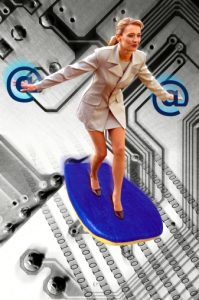Virtual training in safe controlled environments have obvious advantages in engaging patients to assist their rehabilitation. In the last ten years, various scenarios have been utilized to stimulate patient recovery rates.
Virtual walking with obstacle training, snowboarding, diving with sharks, driving a boat or a plane, Wii Balance Boards, and Play Station have been effective, and fun, tools used with patients to improve lower extremity awareness and motor function.
Each treatment program offers its own benefits. What we learn from this is how real life activities have the advantage of presenting more challenging actions to patients rewarding them with greater restoration of function. Progressively challenging objectives that engage the mind of the player, as well as physical reactions appear to stimulate higher returns on functional ability.
Having patients “play” to achieve improved function has proven to be an advantageous therapy. Treatments focus on visual and auditory feedback. Some programs use interaction with cybergloves and most utilize screens or projections of realistic environments to move within.
Gait speed and balance have been the top contenders for improvement with the use of virtual reality videogames in chronic phase post-stroke patients (6 months post stroke).






